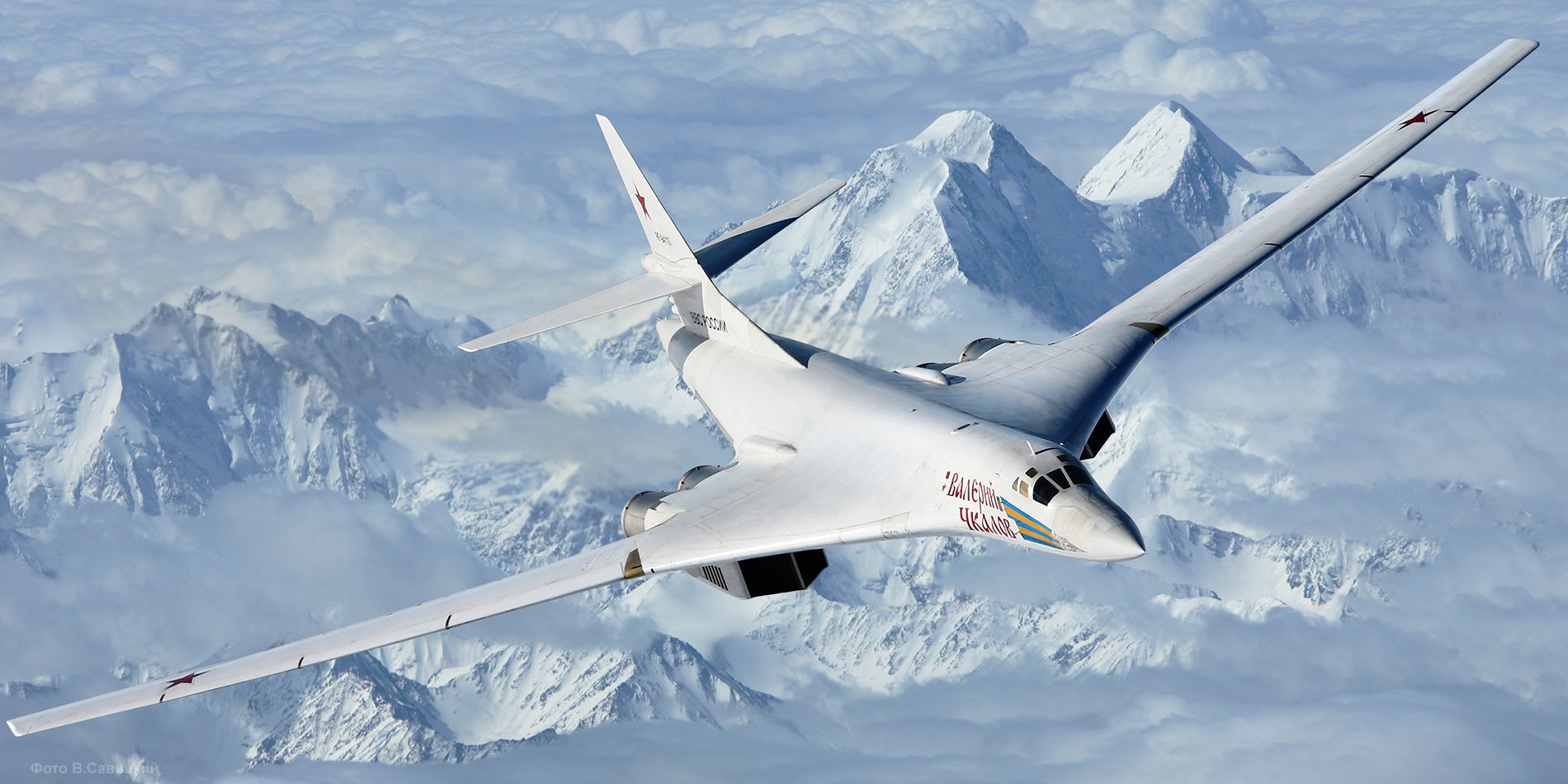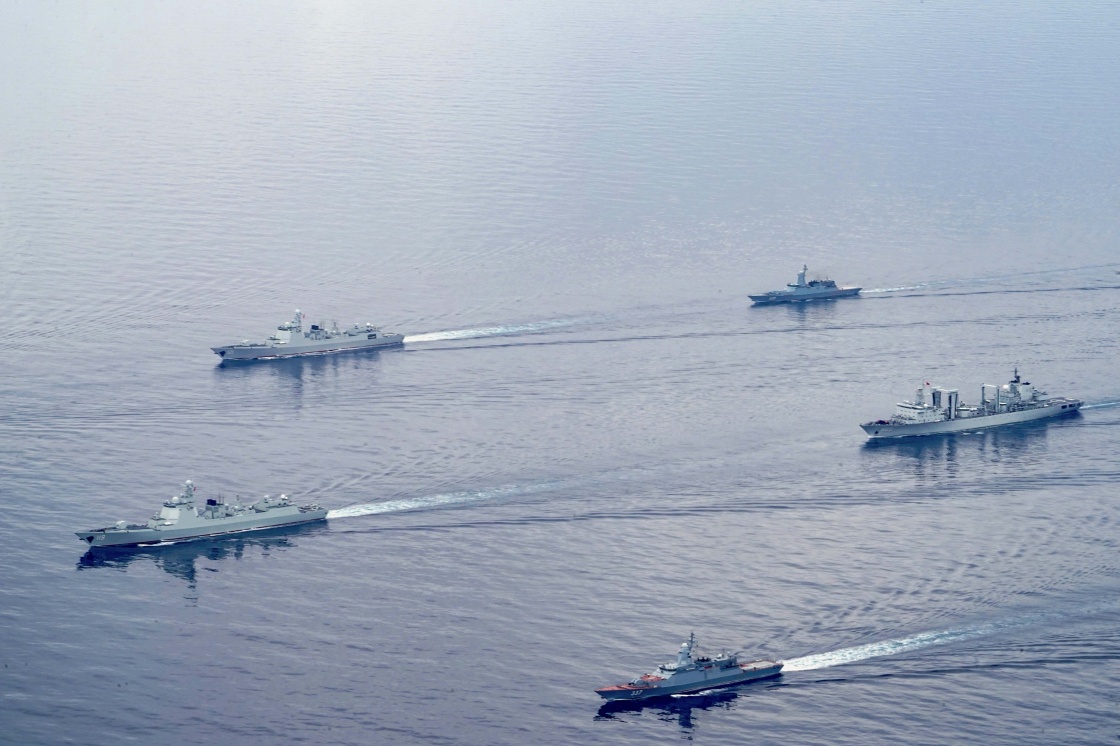Russia plans to use its new and improved Tupolev Tu-160M White Swan strategic bomber aircraft for “defending” against possible attacks from US and Japanese naval assets, according to official sources in its Ministry of Defense (MoD).
Crimea Attack Provokes Dangerous Escalation! Russia, For The 1st Time, Strikes At NATO’s Doorstep; Hits Ukraine’s Reni Port
While a final decision in this regard is yet to be made, and the plan is only being considered at an experimental level according to a report in Izvestia, such a deployment is still consistent with the increasing geopolitical and military tensions with the West and Tokyo in Moscow’s far east – part of a larger Indo-Pacific security dynamic.
This also makes Russia the only country with geographic fronts and stakes in European and Indo-Pacific defense issues, where Moscow and China perceive strategic provocation from the US.
Far east and northeast Asia has become a major flashpoint owing to renewed tensions over the last year. This includes tensions between North Korea, and the US-South Korea-Japan combined, friction between Moscow and Tokyo over the disputed Kuril islands, and the North Atlantic Treaty Organization’s (NATO) foray into the region through enhanced cooperation with Japan and Taiwan while criticizing China.
Russia recently concluded a massive naval drill with China, Northern/Interaction-2023 in the Sea of Japan, and with such exercises and joint “strategic patrols” with their military aircraft likely to continue over the next year, a plan to use a highly advanced strategic bomber here adds a new dimension to the military-technological dynamic.
White Swan Over The Sea Of Japan
According to unnamed sources quoted by Izvestia, the RuMoD is considering the deployment of a new regiment of the Tu-160 White Swan in the region. If finalized, the bombers will join the 326th long-range heavy-bomber aviation division in the Amur region in the far-east.
“According to experts, the deployment of strategic missile carriers in the Far East should neutralize the threats posed by the United States and its closest allies in the region,” the report in Izvestia added.

RuMoD officials told Izvestia that the decision depends upon the “volume and structure of the state defense order for the coming years.” This refers to the modernized and heavily upgraded ‘M’ variant of the Tu-160 that is being constructed, the third model of which made its debut flight earlier this month, according to the United Aircraft Corporation (UAC).
The upgraded Tu-160M represents a major step forward for the Russian strategic bomber force as it allows the service to offset the delays in the PAK-DA bomber program, which has been marred with delays.
With the PAK-DA still in the design and development stage and the imbalance created by the American unveiling of its next-generation B-21 Raider bomber, the Tu-160M White Swan will likely bolster the Russian fleet significantly. The beginning of state testing could be a significant step in that direction.
According to military expert Yuri Lyamin quoted in the Izvestia report, missile carriers will be used in the Far East to deter the United States and its closest allies in the region.
“Particular attention should be paid to Japan, with which we still have territorial disagreements over the South Kurils,” he explained. Recently, this state has been increasing its military spending and plans to develop strike weapons systems. “Therefore, it is necessary to strengthen our deterrence forces to neutralize the threat from this direction,” Lyamin said.

Fly In, Fire & Speed Away
Having a highly advanced fast-flying bomber that has even advanced electronics and avionics and carries a greater variety of air-to-ground missilery lends a bigger theater-level advantage in threatening key land and sea targets while freeing up the naval forces for other tasks.
The Tu-95MS, which has been participating in “strategic coordination” flights with Chinese bombers like the H-6K, is still relatively slower. The White Swan, on the contrary, much like the US B-1B Lancer, can come close to an operational zone, fire its missiles and speed away before it can come under fire.
New & Upgraded
The variable wing/swing-wing aircraft is the backbone of the Russian Aerospace Force’s long-range bomber force, along with the Tu-95MS bombers. The Russian Air Force (RuAF) has used these bombers in the ongoing conflict to strike targets deep inside Ukraine. The Tu-160 entered service in the Soviet Union in the late 1980s and remained in production until 1995.
According to a TASS report from December 2022, the Tu-160 is the world’s largest supersonic aircraft and the heaviest plane capable of carrying nuclear-tipped cruise missiles.
To improve the strategic bomber capabilities of the VKS at a time of rising tension with the West and to make up for delays in the PAK-DA bomber program, Russian President Vladimir Putin ordered the fresh manufacturing of Tu-160M in 2015.
The Tu-160M upgrade is being implemented in two stages, the first of which included the removal of some older systems, such as bomb sighting systems, and the installation of the new K-042K-1 navigation system and ABSU-200-1 autopilot. The air force has been using this Tu-160M1 type since late 2014.
The updated NK-32 engines (named NK-32-02), the new Novella NV1.70 radar, a computerized “glass” cockpit, contemporary communications and anti-jamming gear, and contemporary conventional and nuclear weaponry are a part of the second Tu-160M2 phase.
With nearly 55,000 pounds of thrust produced at full afterburner, the Kuznetsov NK-32 engine, initially fitted on the Tu-160, is frequently regarded as the most potent combat aircraft engine.
The Tu-160M is reportedly armed with X-101 family cruise missiles with conventional (high-explosive, high-explosive, cluster, volumetric detonating) and nuclear (X-102) warheads.
These missiles can fit in 12 slots on the aircraft. According to some sources, a Tu-160 missile-carrying aircraft specially modified for this role was used to launch the first combat tests of these missiles in Syria.
- The author can be reached at satamp@gmail.com
- Follow EurAsian Times on Google News




